
Preservation Self-Assessment Program
Location
Environmental Monitoring and Management
A monitoring program will allow you to establish a baseline for your environment and its typical conditions. You can infer deterioration rates of your collection materials, the risk of mold outbreak, and likelihood of pest infestations from this data. As a result, your organization will benefit from having hard data to improve policy and environment control measures. Environmental monitoring and striving for an optimal preservation environment is the single most important thing you can do to sustain the life of your collections.
A full-scale environmental monitoring and management program should be comprehensive, including:
- Temperature: Establish an average temperature and the allowable annual variance.
- Relative humidity (RH): Establish an average relative humidity and the allowable annual variance (RH is the amount of moisture (water vapor) held in the air, expressed as a percentage of the maximum amount that the air could hold at the given temperature).
- Pest populations: The goal is not to eradicate all pests. Instead, integrated pest management (IPM) can be your first line of defense. Establish a normal, healthy range for your facilities throughout the calendar year and then continue to monitor fluctuations to make targeted adjustments.
Other environmental considerations include:
- Light levels (visible light and UV light): Monitoring the levels of daylight and artificial lighting will not necessarily be a sustained action like monitoring temperature, relative humidity, and pests. Results should be considered each time collections are shifted to a new environment (e.g. exhibitions).
- Pollution levels: Monitoring contaminants is a relative rarity, since valid pollutant monitoring requires gas analyzers and other expensive gear. Instead, one can make sure that HVAC system’s filters are changed often to mitigate the effects of airborne particulate and possibly gasseous pollutants.
Monitoring Equipment
The quality and prices of equipment varies considerably. Although some tools have emerged as industry leaders for a given function (i.e. PEM dataloggers), keep in mind that any one of these methods below will be effective so long as you are checking and recording results consistently.
Temperature and RH:
- Datalogger (independent, wired, or wireless)
- Hygrothermograph
- Portable hygro-thermometer
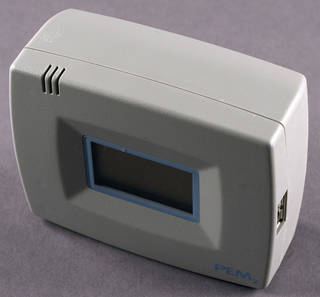
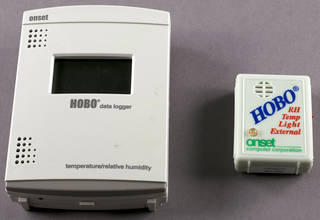
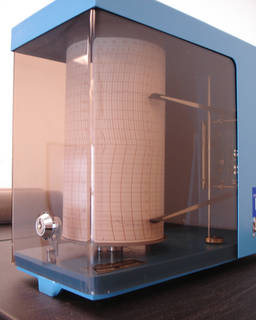
Pests:
- Traps (sticky, unbaited, and non-toxic)
- Temperature and RH monitoring should inform prevention of mold and pest population growth.
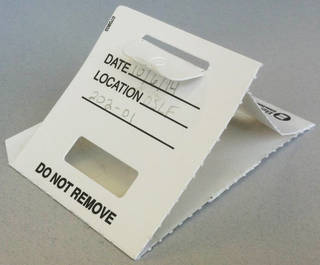
Light:
- Light meters
- Blue Wool test

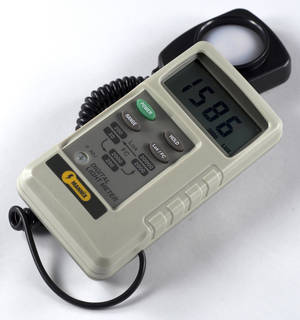
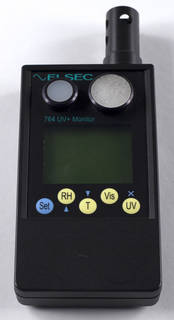

Trained and attentive staff will go a long way in the effort to monitor across facilities and across collections spaces. Getting people to recognize the importance of a balanced and well-documented environment is the most crucial first step.
Temperature
Regulating temperature (along with humidity) is crucial for lengthening the viable lives of your collections. High temperatures will accelerate the rate of material deterioration. All damaging environmental factors are exacerbated by heat and humidity, including inherent internal flaws (e.g. residual chemicals) and external threats (e.g. air pollutants) alike. For example, photographic emulsions, prints, and writing media will oxidize more quickly; color dyes will fade more drastically; and, acidic papers will yellow and embrittle at accelerated rates.
Temperature and humidity will have a mutual effect on one another. Within certain ranges, a lower temperature can compensate for a higher RH and vice versa. The preservation community recognizes this by establishing and supporting standards like ISO 18911, and, in lieu of recommending rigid temperature and RH limits, it has championed setting targets rather than absolutes when determining storage climate options. This approach recognizes, for example, that for some materials, the RH may range from 20–30% in an environment with a cool-moderate temperature, while in freezing conditions the environment permits a wider range for relative humidity of between 20–40% or greater.
Variations in temperature can cause your materials to expand and contract, which can strain these materials over time. It is best to keep temperatures in your facilities as steady as possible so as to lengthen the viable lives of these items. Even if you cannot maintain the ideal storage temperatures for your materials, it is still helpful to minimize the daily variances as much as you can.
| > 72°F (> 22°C) | Warm – Hot (Poor) |
| 65–72°F (18–22°C) | Moderate (Room Temp.) |
| 55–65°F (13–18°C) | Cool |
| 32–55°F (0–13°C) | Cold |
| < 32°F (< 0°C) | Freezing |
Remember that optimal temperature ranges are just that: ideals. They might not reflect what you are able to accomplish in your storage facilities, but the closer you can get to these conditions the better. Keep in mind that variations in temperature are what we are really trying to avoid. Keeping your materials at steady temperatures, even if imperfect, will still help grant them longer life. You should also consider how to arrange your collections. Since different formats have different needs you may consider how you can store them separately so as to properly match an item with an environment. Don't be discouraged! These conditions should be the goal that you are moving toward, even if you can't always achieve them. For more specific environmental conditions based on formats, see the respective profiles in the Collection ID Guide.
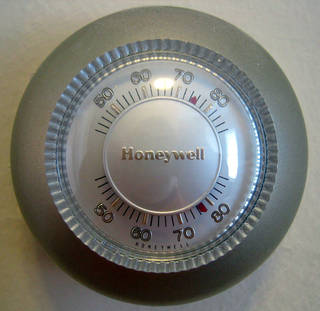
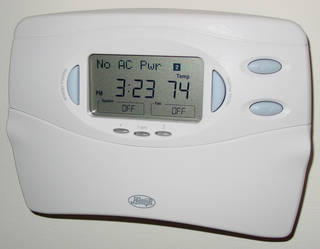
Humidity
Extreme highs, extreme lows, and fluctuating humidity will have a negative effect on materials. Relative humidity (RH) is a measure of how water-saturated the air is in an environment, relative to the air temperature.
- A high RH will generally cause materials to swell and misshapen, as well as make conditions favorable for pest and mold growth/damage.
- A low RH often causes materials to desiccate, shrink, crack, and curl.
- RH fluctuation beyond 10% above or below a set point begins to put materials under considerable strain and at great risk, as the components will often react incongruently (e.g. photographic support and emulsion contracting and expanding at different rates).
As with temperature, rapid fluctuation is the real threat. It speeds up chemical deterioration and brings stress to collection materials over time. It is best to keep the humidity across your facilities as steady as possible. Even if you cannot maintain the best possible relative humidity levels for your materials, it is still helpful to minimize the variances as much as you can.
Generally, it is best to keep collections between 30% and 50% relative humidity. It is important to remember, however, that often when you lower the temperature, you raise the relative humidity. This is why it is critical to monitor humidity and temperature in your storage facilities. Bringing materials out of uncontrolled environments like basements, sheds, and attics and moving them into climate controlled areas like internal rooms or even closets can do much to keep these materials viable.
| < 20% RH | Extremely dry (poor) |
| 20–30% RH | Low humidity; dry (acceptable) |
| 30–50% RH | Moderate humidity; temperate (excellent) |
| 50–70% RH | High humidity; humid (poor) |
| > 70% RH | Extremely damp (very poor) |
| ± 5% RH | No risk |
| ± 10% RH | Minimal risk |
| ± 20% RH | Moderate risk |
| ± 40% RH | High risk |
Consider the strength of your microclimates. If possible, do not place your collection materials near the window, against exterior walls, on or near the ground. A well-sealed case can be a decent buffer from humidity and accidental leaks or spills. In seasons or geographic regions of high humidity, silica gel or similar desiccants or humectants can act to keep humidity at acceptable levels by absorbing moisture in these more enclosed areas. Contact a supplier or manufacturer to learn more about what your unique environment will necessitate.
To learn more about environmental control practices with regard to collection storage, see the Image Permanence Institute’s Environmental Management research and publications.
Local Responders
Establishing a working relationship with fire officials will help to prepare your organization and those first responders for the urgent action that must be taken in the event of a disaster. Soliciting safety advice from police and/or firefighters and inviting them to conduct a walkthrough of your facilities is a particularly beneficial preparatory measure for minimizing damage and improving safety in this location.
Your local fire department may be instrumental in coordinating fire extinguisher training for your staff as well as other emergency training. Emergency training may include locating fire alarms and fire extinguishers, reviewing emergency evacuation procedures and designated meeting places, and making semi-regular reviews of the disaster plan, its locations in the building, and people to contact in the case of a disaster.
Fire Detection
Fire is one of the most damaging disasters to a repository. Having fire detection systems throughout every storage facility is critical in order to help prevent loss. Good smoke detectors and heat detectors can alert staff before a fire gets large enough to set off the fire suppression system. This can give staff time to put out the fire before materials are exposed to the water or chemicals dispersed by the fire suppression system. Detection systems should be tested regularly to make sure they are functional.
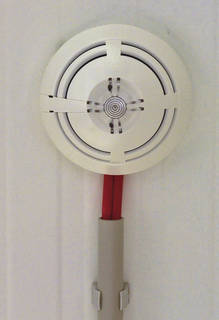
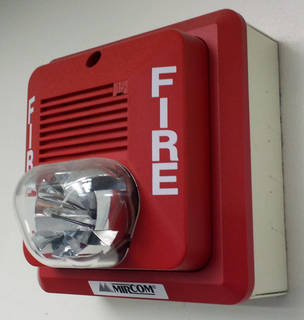
Fire Suppression
Fire suppression systems are critical in a storage area. There are many types of fire suppression systems, but the most common are water sprinkler systems. Any system will have its benefits and drawbacks.
Water sprinklers are cheaper to install, maintain, and upgrade. However, repositories are often concerned about water sprinklers because it is assumed that these systems tend to turn all the sprinklers on in the event of a fire, causing more widespread water damage to collections than necessary. Research, however, has proved this to be untrue. In fact, sprinkler systems tend to be able to focus their fire suppression very closely by turning on only a sprinkler or two sprinkler heads over the fire.
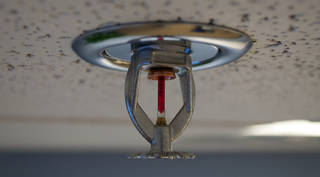
In particular, there are two common types of water sprinkler systems: the wet pipe and the dry pipe. The wet pipe system is the most common type as it is easier to install, maintain, and respond to fires. The dry pipe sprinkler system is used when the risk of pipe freezing is significant, or the risk of overhead water pipes is to be avoided. This is especially common in speacial collections. These systems can be costly to install, and they are more prone to corrosion and valve failure. In addition, their effectiveness can be limited because of the delay in response, which is a critical factor. The first minutes of a fire are when it can most quickly get out of control.
Halon systems have been preferred by many institutions because halon gas can extinguish fires without leaving any damaging residue. Halon systems were once widely used but are no longer being manufactured due to environmental and safety concerns. Organizations with existing halon systems may use them, but they cannot be replenished. Halon systems are expensive to maintain as well; the supply of halon gas was costly to replace. Halon-protected rooms must maintain airtight seals since the gas will flow to other areas of the building if there are any air passages linking them. CO2 systems, as a current environmentally friendly gasseous suppression system, can be effective in tightly sealed spaces, but have not matched the efficiency of halon systems.
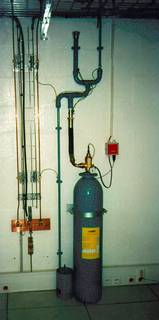
Institutions should not fear water systems. When properly maintained, they can be very effective and minimally damaging to collections. Compared to fire, which can completely destroy collections, water damage to materials is often not the end of the world for your collections. There are many effective techniques for treating water damage, and there are several excellent disaster recovery specialists that can help, should your sprinklers drench your materials.
Whatever system you choose for your institution, proper maintenance and upgrades are critical to maintain the long-term effectiveness of your fire suppression system. It is also very important that you check with your local building codes to see what you will be allowed to use in your facility. Some states or counties have laws that restrict the kinds of chemicals that can be used in your fire suppression systems.
Having easily accessible hand fire extinguishers throughout your storage facilities is critical when responding to a fire. Extinguishers should be recharged and/or inspected regularly to make sure they are functional. Additionally, staff should be trained on the correct usage of your particular fire extinguisher model(s) as well as to know when not to use it. Most important is personal safety: alert your fire department before anything else, and know when to just get out.
Water Drainage
Standing water can be very hazardous to your collections, especially those stored on the floor or on lower shelves. Water can break down materials and encourage mold growth. As a rule, it is best to store materials up above the bottom two or three shelves in your basement where space permits. It is also a good idea to have drains in the floors where practical, especially in basements, in order to discourage standing water.
Storing Materials on the Floor
Placing materials directly on the floor can put them at high risk of danger should you have flooding in this storage facility. Flooding and water damage can be caused by Mother Nature but can also be caused by broken pipes or spills. In situations where objects must be on or near the ground, consider the use of buffering materials and/or risers to prevent direct damage. Bear in mind that many storage containers are often hygroscopic, and water touching the bottom will wick up.

In addition to basic preventative measures to minimize water damage, many cultural institutions also utilize water detectors to identify water leaks and provide an immediate alert. These sensors can be placed in basements or in other areas that may be prone to environmental or accidental flooding. It is advisable to regularly check the battery on these alarms.